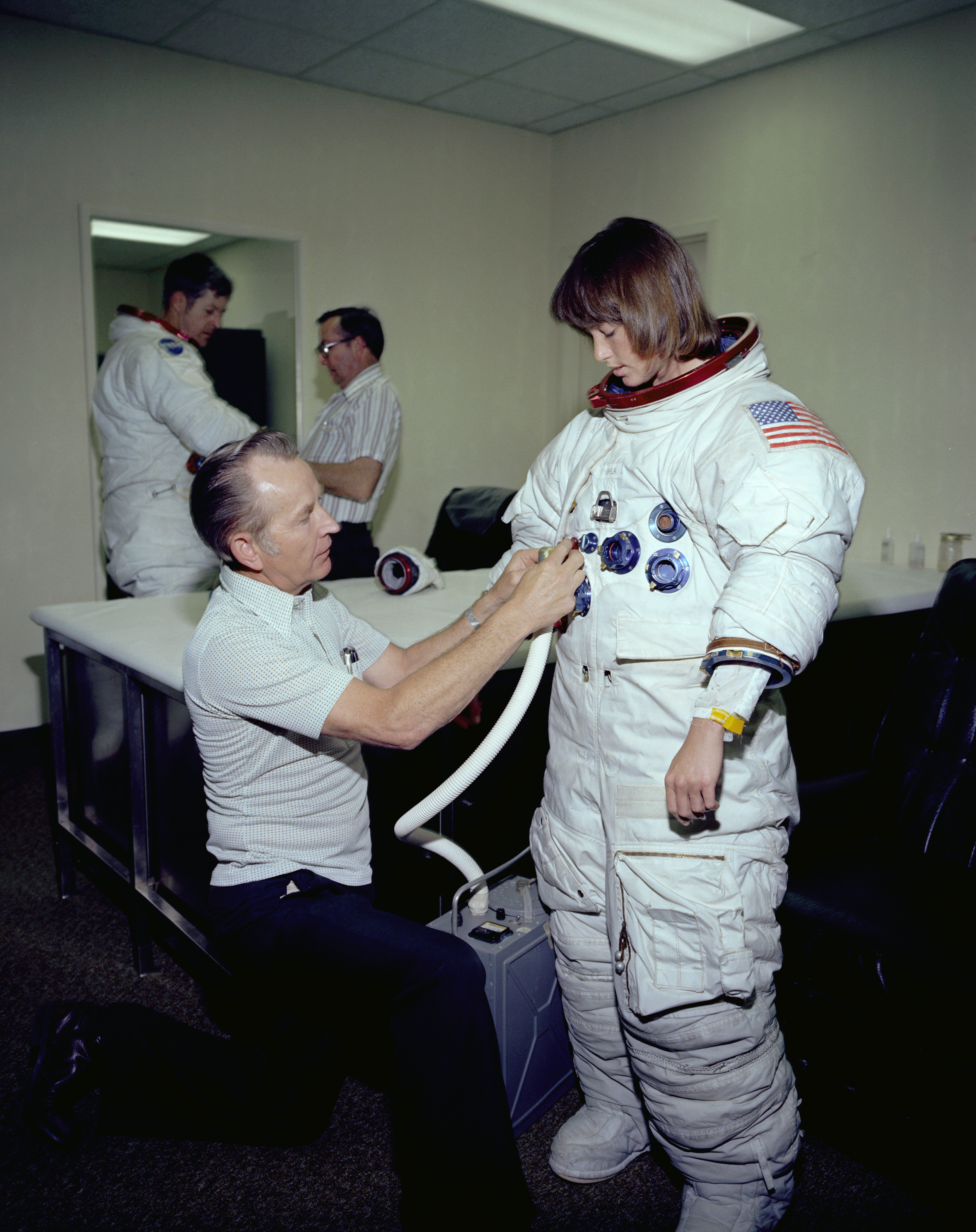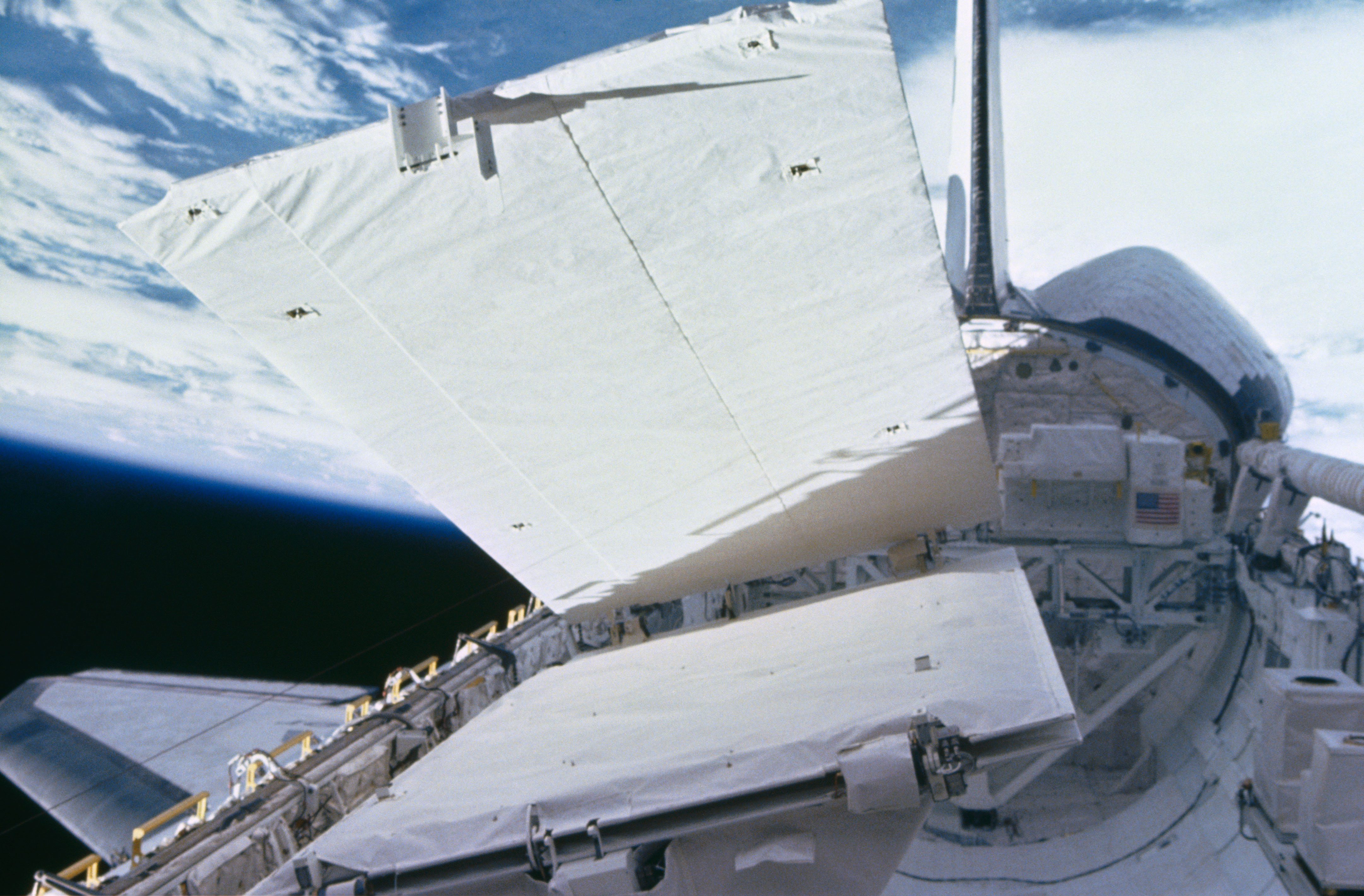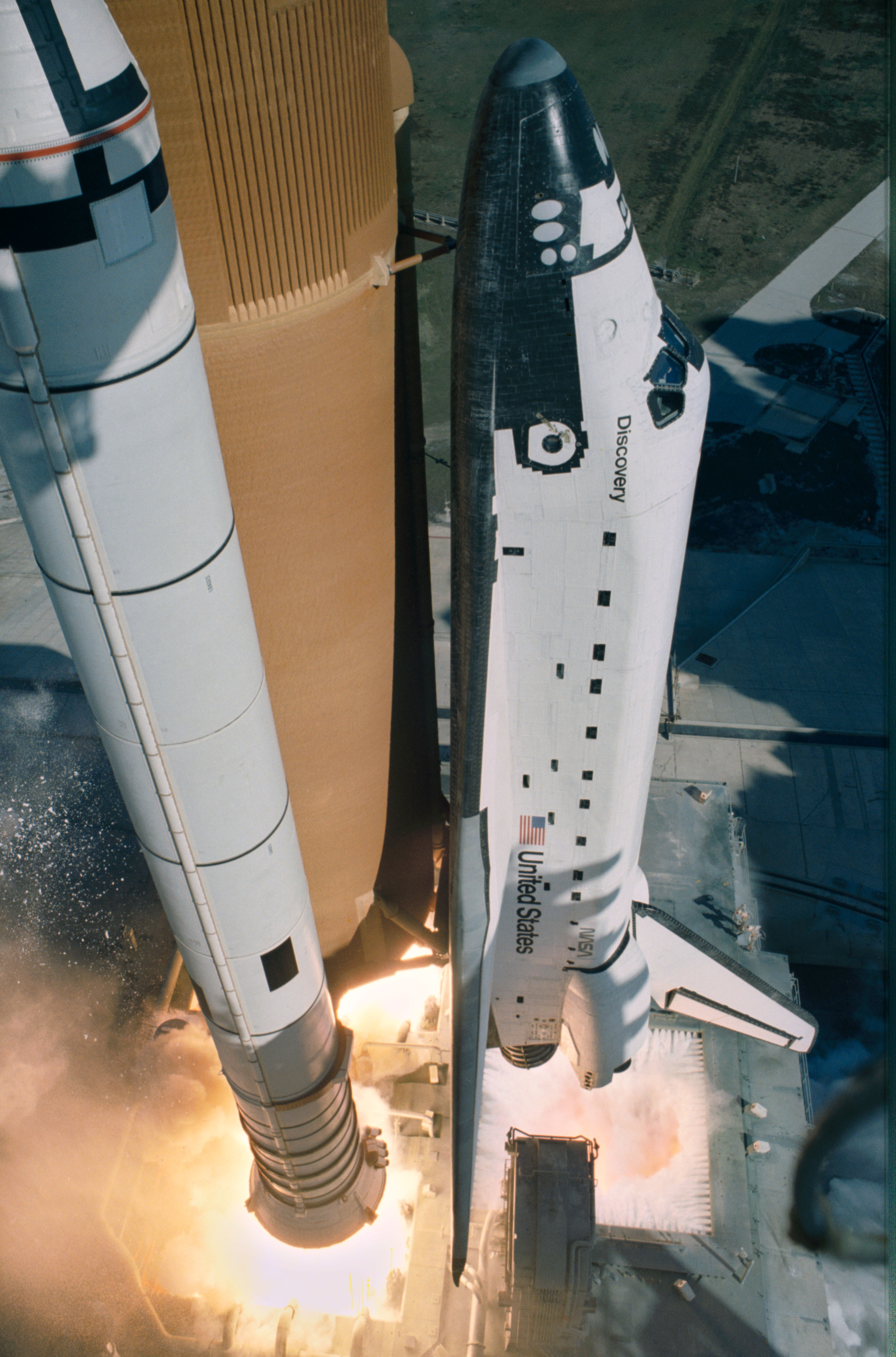|
STS-51A
STS-51-A (formerly STS-19) was the 14th flight of NASA's Space Shuttle program, and the second flight of Space Shuttle ''Discovery''. The mission launched from Kennedy Space Center on November 8, 1984, and landed just under eight days later on November 16, 1984. STS-51-A marked the first time a shuttle deployed two communications satellites, and retrieved from orbit two other communications satellites. The Canadian Anik D2 and Syncom IV-1 satellites were both successfully deployed by the crew of ''Discovery''. Palapa B2 and Westar 6, meanwhile, had been deployed during the STS-41-B mission earlier in the year, but had been placed into improper orbits due to the malfunctioning of their kick motors; they were both safely recovered and returned to Earth during STS-51-A. Crew Spacewalks * '' Allen and Gardner '' – EVA 1 * EVA 1 Start: November 12, 1984 – 13:25 UTC * EVA 1 End: November 12, 1984 - 19:25 UTC * Duration: 6 hours, 0 minute * '' Allen and Gardner '' – ... [...More Info...] [...Related Items...] OR: [Wikipedia] [Google] [Baidu] |
Anna Lee Fisher
Anna Lee Fisher ( née Sims; born August 24, 1949) is an American chemist, emergency physician and a former NASA astronaut. Formerly married to fellow astronaut Bill Fisher, and the mother of two children, in 1984, she became the first mother to fly in space. During her career at NASA, she was involved with three major programs: the Space Shuttle, the International Space Station and the Orion spacecraft. A graduate of University of California, Los Angeles (UCLA), where she earned a Bachelor of Science degree in chemistry in 1971, Fisher started graduate school in chemistry, conducting X-ray crystallographic studies of metallocarboranes. The following year she moved to the UCLA School of Medicine, where she received her Doctor of Medicine degree in 1976. She completed her internship at Harbor General Hospital in Torrance, California, in 1977, and chose to specialize in emergency medicine. Fisher was selected as an astronaut candidate with NASA Astronaut Group 8, the first ... [...More Info...] [...Related Items...] OR: [Wikipedia] [Google] [Baidu] |
Palapa
Palapa is a series of Communications satellites owned by Indosat, an Indonesian telecommunications company (formerly by Perumtel and then by PT Satelit Palapa Indonesia/Satelindo). Starting with the first in July 1976, at which time Indonesia became the first developing country to operate its own domestic satellite system. The estimated cost for the project was US$1 billion. History The first satellite, Palapa-A1 of , was launched on 8 July 1976 at 23:31 UTC from Kennedy Space Center by a Delta 2914 launch vehicle, or at 06:31 Indonesian Time on 9 July 1976. Palapa-A2 was launched on 10 March 1977. The name "Palapa" was bestowed by then Indonesian President Suharto, after the Palapa oath sworn by Gajah Mada, the Prime Minister of Majapahit Kingdom, in 1334. According to the Pararaton (Book of Kings), Gajah Mada swore that he would not taste any ''palapa'' (historians suggest it refers to spice or a kind of flavouring), as long as he had not succeeded in unifying ... [...More Info...] [...Related Items...] OR: [Wikipedia] [Google] [Baidu] |
Dale Gardner
Dale Allan Gardner (November 8, 1948 – February 19, 2014) was a NASA astronaut, and naval flight officer who flew two Space Shuttle missions during the mid 1980s. Personal information Born on November 8, 1948, in Fairmont, Minnesota, Gardner grew up in Sherburn, Minnesota, and Savanna, Illinois. He considered his hometown to be Clinton, Iowa, where his mother, Mrs. Alice Gardner, resides. He lived with his second wife Sherry in Golden, Colorado and later in Divide, Colorado until his death. Gardner is also survived by his daughter Lisa Gardner-Hoefler, grandchild Isabella Hoefler and his sisters Peggy Janka and Kay Zipse. His father William and son Todd predeceased him. An avid sports enthusiast, he enjoyed snow skiing, golfing, tennis, woodworking and photography. Education Gardner graduated as valedictorian of his class from Savanna Community High School, in Savanna, Illinois, in 1966. He received a Bachelor of Science degree in Engineering Physics from the University o ... [...More Info...] [...Related Items...] OR: [Wikipedia] [Google] [Baidu] |
Space Shuttle Program
The Space Shuttle program was the fourth human spaceflight program carried out by the U.S. National Aeronautics and Space Administration (NASA), which accomplished routine transportation for Earth-to-orbit crew and cargo from 1981 to 2011. Its official name, Space Transportation System (STS), was taken from a 1969 plan for a system of reusable spacecraft of which it was the only item funded for development. It flew 135 missions and carried 355 astronauts from 16 countries, many on multiple trips. The Space Shuttle—composed of an orbiter launched with two reusable solid rocket boosters and a disposable external fuel tank—carried up to eight astronauts and up to of payload into low Earth orbit (LEO). When its mission was complete, the orbiter would reenter the Earth's atmosphere and land like a glider at either the Kennedy Space Center or Edwards Air Force Base. The Shuttle is the only winged crewed spacecraft to have achieved orbit and landing, and the first re ... [...More Info...] [...Related Items...] OR: [Wikipedia] [Google] [Baidu] |
STS-41-G
STS-41-G (formerly STS-17) was the 13th flight of NASA's Space Shuttle program and the sixth flight of Space Shuttle ''Challenger''. ''Challenger'' launched on October 5, 1984, and conducted the second shuttle landing at Kennedy Space Center on October 13, 1984. It was the first shuttle mission to carry a crew of seven, including the first crew with two women ( Sally K. Ride and Kathryn D. Sullivan), the first American Extravehicular activity (EVA) involving a woman (Sullivan), the first Australian-born person to journey into space as well as the first astronaut with a beard ( Paul D. Scully-Power) and the first Canadian astronaut (Marc Garneau). STS-41-G was the third shuttle mission to carry an IMAX camera on board to document the flight. Launch and in-orbit footage from the mission (including Sullivan and Leestma's EVA) appeared in the 1985 IMAX movie '' The Dream is Alive''. Crew Backup crew Spacewalk * ''Leestma and Sullivan'' – EVA 1 * EVA 1 Start: October ... [...More Info...] [...Related Items...] OR: [Wikipedia] [Google] [Baidu] |
STS-51-C
STS-51-C (formerly STS-10) was the 15th flight of NASA's Space Shuttle program, and the third flight of Space Shuttle ''Discovery''. It launched on January 24, 1985, and made the fourth shuttle landing at Kennedy Space Center, Florida, on January 27, 1985. STS-51-C was the first shuttle mission to deploy a dedicated United States Department of Defense (DoD) payload, and consequently many mission details remain classified. Crew Backup crew Crew seating arrangements Mission summary STS-51-C launched from Kennedy Space Center (KSC) on January 24, 1985, at 19:50:00 UTC, and was the first of nine shuttle missions in 1985. It was originally scheduled for January 23, 1985, but was delayed because of freezing weather. ''Challenger'' had been scheduled for this flight, but ''Discovery'' was substituted when problems were encountered with ''Challenger'' thermal protection tiles. STS-51-C marked the 100th human spaceflight to achieve orbit. The mission's length of three ... [...More Info...] [...Related Items...] OR: [Wikipedia] [Google] [Baidu] |
Communications Satellite
A communications satellite is an artificial satellite that relays and amplifies radio telecommunication signals via a transponder; it creates a communication channel between a source transmitter and a receiver at different locations on Earth. Communications satellites are used for television, telephone, radio, internet, and military applications. Many communications satellites are in geostationary orbit above the equator, so that the satellite appears stationary at the same point in the sky; therefore the satellite dish antennas of ground stations can be aimed permanently at that spot and do not have to move to track the satellite. Others form satellite constellations in low Earth orbit, where antennas on the ground have to follow the position of the satellites and switch between satellites frequently. The high frequency radio waves used for telecommunications links travel by line of sight and so are obstructed by the curve of the Earth. The purpose of communications ... [...More Info...] [...Related Items...] OR: [Wikipedia] [Google] [Baidu] |
Anik (satellite)
The Anik satellites are a series of geostationary communications satellites launched for Telesat Canada for television, voice and data in Canada and other parts of the world, from 1972 through 2013. Some of the later satellites in the series remain operational in orbit, while others have been retired to a graveyard orbit. The naming of the satellite was determined by a national contest, and was won by Julie-Frances Czapla of Saint-Léonard, Québec. In Inuktitut, ''Anik'' means "little brother". Satellites Anik A The Anik A satellites were the world's first national domestic satellites. (Prior to Anik A1's launch, all geosynchronous communications satellites were transcontinental, i.e. Intelsat I and others.) The Anik A fleet of three satellites gave CBC the ability to reach the Canadian North for the first time. Each of the satellites was equipped with 12 C-band transponders, and thus had the capacity for 12 colour television channels. Three channels were allocate ... [...More Info...] [...Related Items...] OR: [Wikipedia] [Google] [Baidu] |
Space Transportation System
The Space Transportation System (STS), also known internally to NASA as the Integrated Program Plan (IPP), was a proposed system of reusable crewed space vehicles envisioned in 1969 to support extended operations beyond the Apollo program. (NASA appropriated the name for its Space Shuttle Program, the only component of the proposal to survive Congressional funding approval). The purpose of the system was two-fold: to reduce the cost of spaceflight by replacing the current method of launching capsules on expendable rockets with reusable spacecraft; and to support ambitious follow-on programs including permanent orbiting space stations around Earth and the Moon, and a human landing mission to Mars. In February 1969, President Richard Nixon appointed a Space Task Group headed by Vice President Spiro Agnew to recommend human space projects beyond Apollo. The group responded in September with the outline of the STS, and three different program levels of effort culminating with ... [...More Info...] [...Related Items...] OR: [Wikipedia] [Google] [Baidu] |
Syncom
Syncom (for "synchronous communication satellite") started as a 1961 NASA program for active geosynchronous communication satellites, all of which were developed and manufactured by the Space and Communications division of Hughes Aircraft Company (now the Boeing Satellite Development Center). Syncom 2, launched in 1963, was the world's first geosynchronous communications satellite. Syncom 3, launched in 1964, was the world's first geostationary satellite. In the 1980s, the series was continued as Syncom IV with some much larger satellites, also manufactured by Hughes. They were leased to the United States military under the Leasat program. Syncom 1, 2 and 3 Common features The three early Syncom satellites were experimental spacecraft built by Hughes Aircraft Company's facility in Culver City, California, by a team led by Harold Rosen, Don Williams, and Thomas Hudspeth. All three satellites were cylindrical in shape, with a diameter of about and a height of about . Pre- ... [...More Info...] [...Related Items...] OR: [Wikipedia] [Google] [Baidu] |
Low Earth Orbit
A low Earth orbit (LEO) is an orbit around Earth with a period of 128 minutes or less (making at least 11.25 orbits per day) and an eccentricity less than 0.25. Most of the artificial objects in outer space are in LEO, with an altitude never more than about one-third of the radius of Earth. The term ''LEO region'' is also used for the area of space below an altitude of (about one-third of Earth's radius). Objects in orbits that pass through this zone, even if they have an apogee further out or are sub-orbital, are carefully tracked since they present a collision risk to the many LEO satellites. All crewed space stations to date have been within LEO. From 1968 to 1972, the Apollo program's lunar missions sent humans beyond LEO. Since the end of the Apollo program, no human spaceflights have been beyond LEO. Defining characteristics A wide variety of sources define LEO in terms of altitude. The altitude of an object in an elliptic orbit can vary significantly along the ... [...More Info...] [...Related Items...] OR: [Wikipedia] [Google] [Baidu] |
Apogee Kick Motor
An apogee kick motor (AKM) is a rocket motor that is regularly employed on artificial satellites to provide the final impulse to change the trajectory from the transfer orbit into its final (most commonly circular) orbit. For a satellite launched from the Earth, the rocket firing is done at the highest point of the transfer orbit, known as the apogee. An apogee kick motor is used, for example, for satellites launched into a geostationary orbit. As the vast majority of geostationary satellite launches are carried out from spaceports at a significant distance away from Earth's equator, the carrier rocket often only launches the satellite into an orbit with a non-zero inclination approximately equal to the latitude of the launch site. This orbit is commonly known as a "geostationary transfer orbit" or a "geosynchronous transfer orbit". The satellite must then provide thrust to bring forth the needed delta v to reach a geostationary orbit. This is typically done with a fixed on ... [...More Info...] [...Related Items...] OR: [Wikipedia] [Google] [Baidu] |






.jpg)
